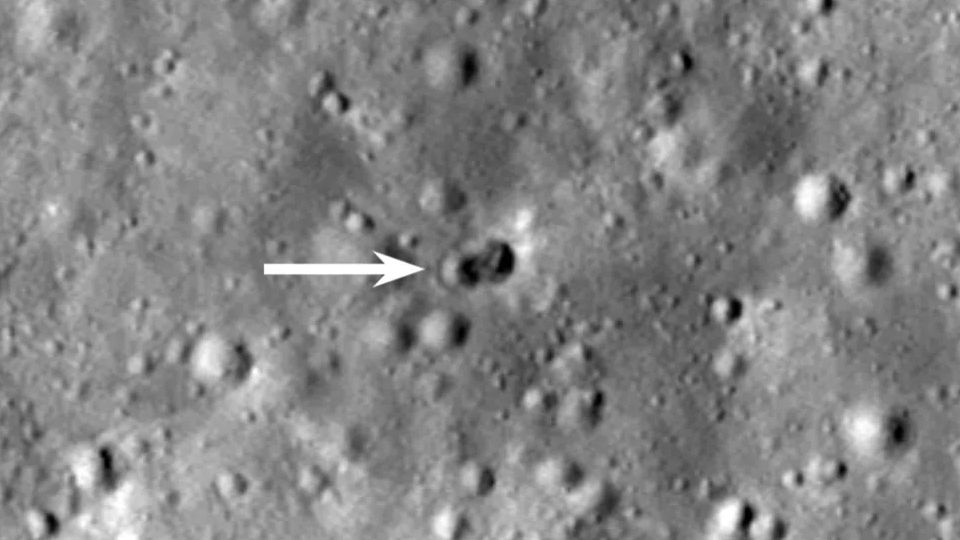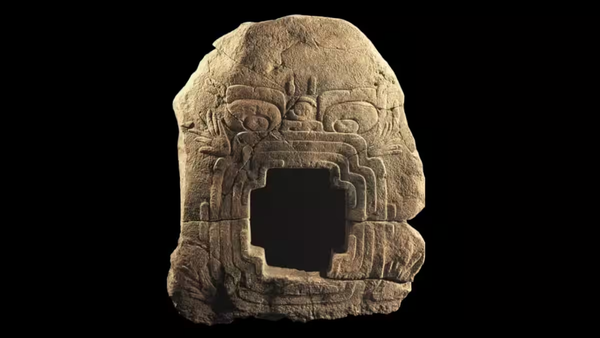Mystery rocket that crashed into the moon leaving two craters baffles scientists

Some astronomers believe the new double crater spotted by NASA's Lunar Reconnaissance Orbiter was a Chinese rocket launched in 2014.
NASA has photographed the crash site of the mysterious rocket that smashed into the far side of the moon in March, and the unidentified spacecraft left behind a weird double crater that has scientists puzzled.
Images of the crash site were taken by NASA's Lunar Reconnaissance Orbiter (LRO) on May 25 and released on June 24. The photos show that the wayward debris (the origins of which are still contested) somehow punched out two overlapping craters when it smashed into the far side of the moon traveling at roughly 5,770 mph (9,290 km/h).
The unexpected dual craters add an extra layer of strangeness to a mystery that has confounded space watchers since January, when Bill Gray, a U.S. astronomer and developer of software that tracks near-Earth objects, predicted that the orbiting piece of space junk would hit the moon's far side in a matter of months, Live Science previously reported. When Gray first spotted the debris, he suggested that it was the second stage of a Falcon X rocket launched by Elon Musk's SpaceX in 2015. But later observations and analysis of orbital data hinted that the object was the spent upper stage of China's Chang'e 5-T1 rocket, a spacecraft (named after the Chinese moon goddess) which launched in 2014. Chinese officials, however, disagreed, claiming that this rocket's upper stage burned up in Earth's atmosphere years ago.
To date, at least 47 NASA rocket bodies have crashed into the moon, according to Arizona State University, but "the double crater was unexpected," NASA wrote in a statement. "No other rocket body impacts on the Moon created double craters."
Although scientists were unable to directly observe the moment of impact, experts predicted that the discarded rocket stage struck the lunar surface at Hertzsprung crater on the moon's far side, on March 4 at 7:25 a.m. EST (12:25 GMT). Observations from the LRO show the two indentations on the lunar surface — the eastern crater measures 59 feet (18 meters) wide, while the western crater measures 52.5 feet (16 m) across. If NASA's LRO had been positioned to capture images of the impact, it would have likely documented a plume of lunar dust erupt hundreds of miles high.
Scientists are still hypothesizing about what could have created the two craters. One possibility is that the craters were formed by a piece of debris that had two large masses at each end — although this scenario would be unusual, NASA representatives said.
"Typically a spent rocket has mass concentrated at the motor end; the rest of the rocket stage mainly consists of an empty fuel tank," according to the statement.

A Long March 3C rocket launched Chang'e 5 T1, China's first round-trip uncrewed moon mission, from Xichang Satellite Launch Center in October 2014. (Image credit: China Aerospace Science and Technology Corporation)
Is it really Chang'e 5-T1's booster?
Thanks for visiting Our Secret House
Create your free account by signing up or log in to continue reading.





